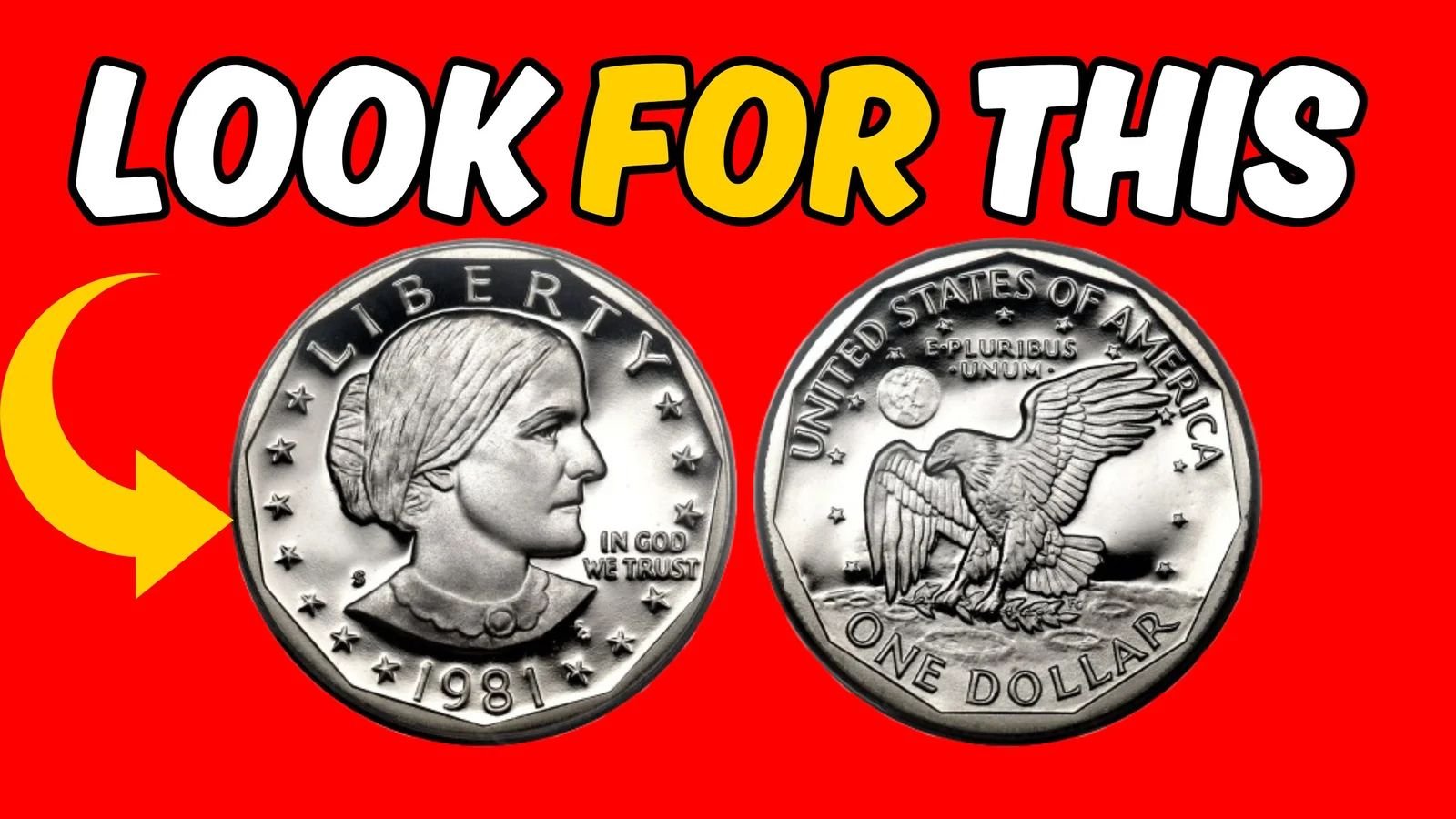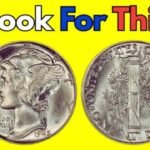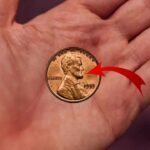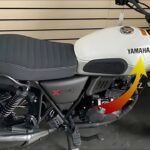In the world of coin collecting—numismatics—the most unexpected finds often come from the most overlooked places. That’s certainly true for the Susan B. Anthony Dollar. Once dismissed as a novelty, often lost at the bottom of coin jars or mistaken for quarters, this small-dollar coin is enjoying a surprising renaissance.
But what’s driven this sudden interest? Rare varieties, subtle die changes, and intentional design tweaks have made certain Susan B. Anthony Dollar issues highly collectible. If you’ve ever found one in your change and wondered, “Could this be worth anything?” now is the time to find out.
A Coin with a Polarizing Beginning
First minted in 1979, the Susan B. Anthony Dollar marked a historic moment: for the first time in U.S. history, a circulating coin featured the portrait of a real woman—pioneering reformer and suffrage leader Susan B. Anthony. The small, round coin bore her likeness on the obverse, with the year and mint mark, while the reverse depicted an eagle soaring over the earth.
Unfortunately, despite its historical significance, the Susan B. Anthony Dollar never saw popularity in everyday use. Its size and color so closely resembled a quarter that vending machines often failed to distinguish between them, and consumers routinely spent them unknowingly. Production ended in 1981, only to briefly resume in 1999 before the Sacagawea dollar replaced it. However, the coin’s issues with design and public acceptance rendered it nearly invisible in the world of circulating currency.
Yet for collectors, these very shortcomings are what sparked intrigue—because some of the most interesting pieces aren’t the common ones, but the variants that slipped through unnoticed.
The Crown Jewel: 1979-P “Wide Rim” Susan B. Anthony Dollar
The most famous modern find in the Susan B. Anthony Dollar universe is the 1979-P “Wide Rim” variety, sometimes called the “Near Date.” Here’s why it’s special:
- Die Variation: Early in the production run, the U.S. Mint used a die with the date set unusually close to the rim, creating noticeably wider rim space elsewhere. Later, this was replaced with a “narrow rim” die. The early wide-rim pieces are now rare.
- Rarity: It’s estimated that only a few thousand wide-rim coins exist—compared to millions of narrow-rimmed pieces.
- Market Value: In high grades (especially uncirculated, XF, or MS condition), these coins can fetch $100–$500, and well-preserved ones have sold for significantly more in the collector-grade market.
Collectors often compare the 1979-P wide-rim side-by-side with a narrow-rim example to see the difference. In the wide-rim version, the date—and particularly the “9”—appears cramped against the coin’s edge.
Other Susan B. Anthony Dollar Varieties Gaining Interest
Besides the wide-rim, several other Susan B. Anthony Dollar versions are drawing collector attention. These include:
- 1981-S Proof Coins (Type 2)
Minted specially for collectors and never circulated, the proof coins—especially the Type 2 proof featuring a fully struck “S” mintmark—are scarce in high grades and valued in the collector market. - 1999 “Restart” Coins
The Mint reissued the Susan B. Anthony Dollar in 1999 due to the lack of Sacagawea dollars. Still, production was limited, and 1999 versions are less encountered in circulation, especially in certified mint state, increasing their appeal. - Striking Errors and Misprints
Error coins—like off-center strikes, double-strikes, and broader misalignments—are always interesting to collectors. Even common-date Susan B. Anthony Dollar coins with dramatic errors can be worth upwards of $100–$1,000, depending on severity and condition.
How to Spot a Valuable Susan B. Anthony Dollar: Your Checklist
If you come across a Susan B. Anthony Dollar in your piggy bank or drawer, here’s what to look for:
- 1979-P “Wide Rim” Variations
Look closely at the spacing—the date should appear close to the rim, especially the first “9.” Rub a pair of coins side-by-side to see the difference in rim width. - 1981-S Proof Coins
These should have a mirror-like finish and a pronounced “S” mintmark below the date. If it looks pristine and reflective, it’s worth exploring. - 1999 SBA Dollars
These are less common, making uncirculated or high-grade certified specimens more valuable. Check for crisp detail and no circulation wear. - Error Features
Look for doubling (especially on the date or motto), shifted centers, clipped edges, or flakes of metal disaster—dramatic oddities make for collectible coins. - Condition Counts
Coins in MS-65 or higher mint-state condition, with minimal bag marks, toning, or abrasions, command top dollar. Even a wide-rim variant in circulated condition can be worth more than face value, but preservation is key.
If your coin shows one of these traits and looks solid, it’s worth having it graded by a reputable service like PCGS or NGC. Certified coins often fetch higher prices in auctions and private sales.
Why the Susan B. Anthony Dollar Has Come Back into Focus
What was once considered a flop is now a source of fascinating discovery. Here’s why the Susan B. Anthony Dollar has flipped its value perception:
- Rediscovery of Variety Coins: As collectors dig into die records, subtle rim variants like the 1979 wide rim aren’t accidental—they’re part of production history, making them valuable in modern numismatics.
- Low Mintage Years Getting Attention: 1981 and 1999 coins saw limited mintages, so those that survived in mint-state condition are rare finds.
- Market Expansion: The rise of numismatic content on social media (YouTube coin channels, Reddit communities) has amplified awareness and interest.
- A Shift in Perspective: Historians and collectors are more aware of the coin’s cultural importance—celebrating the first regular-issue female figure on U.S. currency.
What once felt like a disappointing coin now offers unexpected potential to both novice and veteran collectors.
FAQs About the Susan B. Anthony Dollar
Q1: Why is the Susan B. Anthony Dollar suddenly so popular with collectors?
A: It carries historical significance as the first circulating U.S. coin featuring a woman, but collector interest peaked thanks to rare die varieties (like the 1979-P wide rim) and limited-mintage issues like the 1981 proofs and 1999 pieces.
Q2: Exactly what is the 1979-P “Wide Rim” Susan B. Anthony Dollar?
A: It’s an early-struck variant where the date sits noticeably closer to the rim—unlike the later “narrow rim” coins. Because fewer wide-rims were produced, they’re rare and worth significantly more.
Q3: How do I tell wide rim from narrow rim?
A: Lay the coin next to a narrow-rim example. In the wide rim version, the date (especially the “9”) appears almost pushed against the edge. Narrow-rim coins have more space all around the date.
Q4: Are all Susan B. Anthony Dollars worth something?
A: No—most circulated coins from 1979–1981 aren’t rare and are worth face value or small premiums. The valuable ones are specific varieties, proof-only issues, mint-state collectibles, or error coins.
The Bottom Line: Why You Should Not Overlook That Dollar Coin
The resurgence in popularity of the Susan B. Anthony Dollar isn’t a coincidence—it’s a lesson in paying attention to detail. What once seemed like a failed public experiment actually holds untapped treasures for those who know what to look for. The coin may be small, but its collectible potential is mighty.
Next time you find one of these in your change, treat it like a whisper from history, not a hassle. Give it a critical look: is the date too close to the edge? Does it have a mirror shine? Any odd errors? Even if it’s not your multimillion-dollar win, it may still be worth $100 or more—or at least serve as a delightful conversation starter.
The Susan B. Anthony Dollar reminds us that sometimes, history hides in plain sight… waiting for someone curious enough to notice.
Some Important Link
| Telegram Group | Click Here |
| WhatsApp Group | Click Here |
| Home Page | Click Here |










